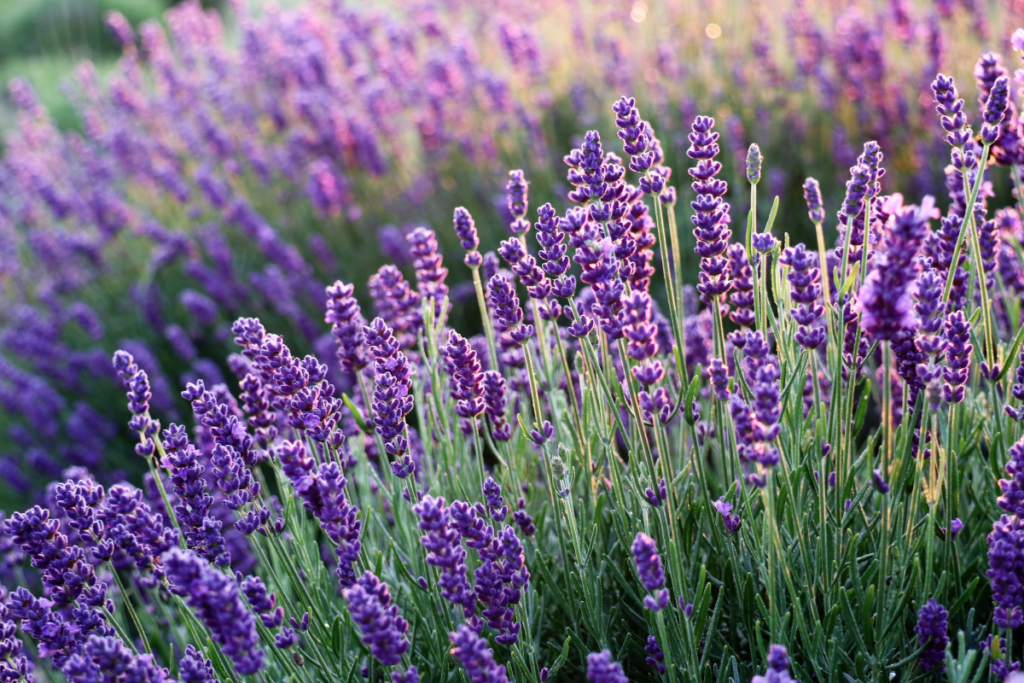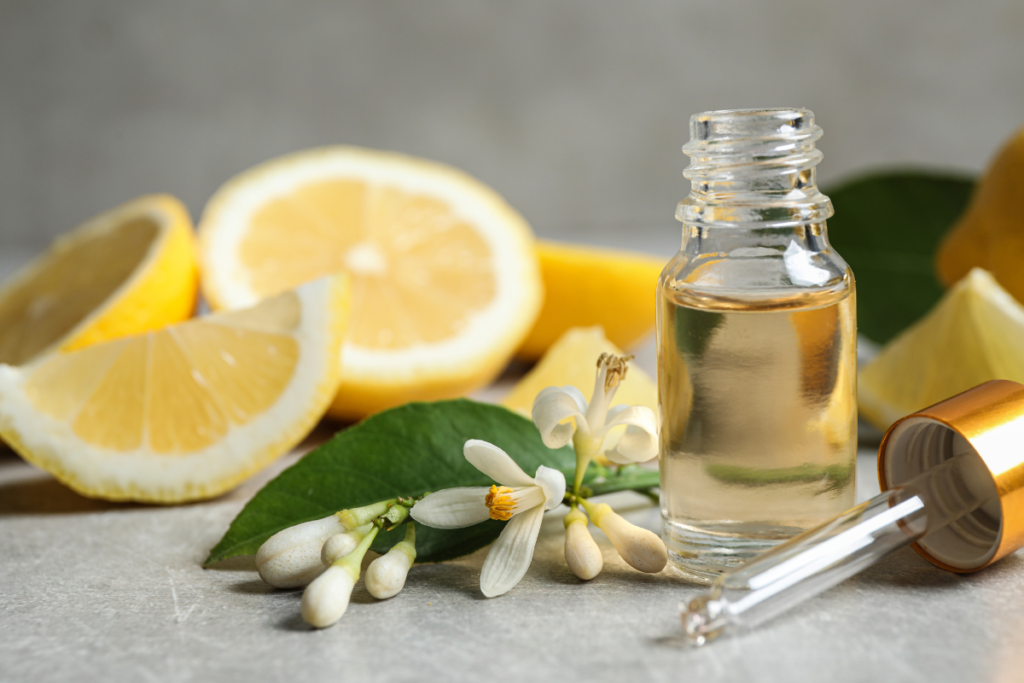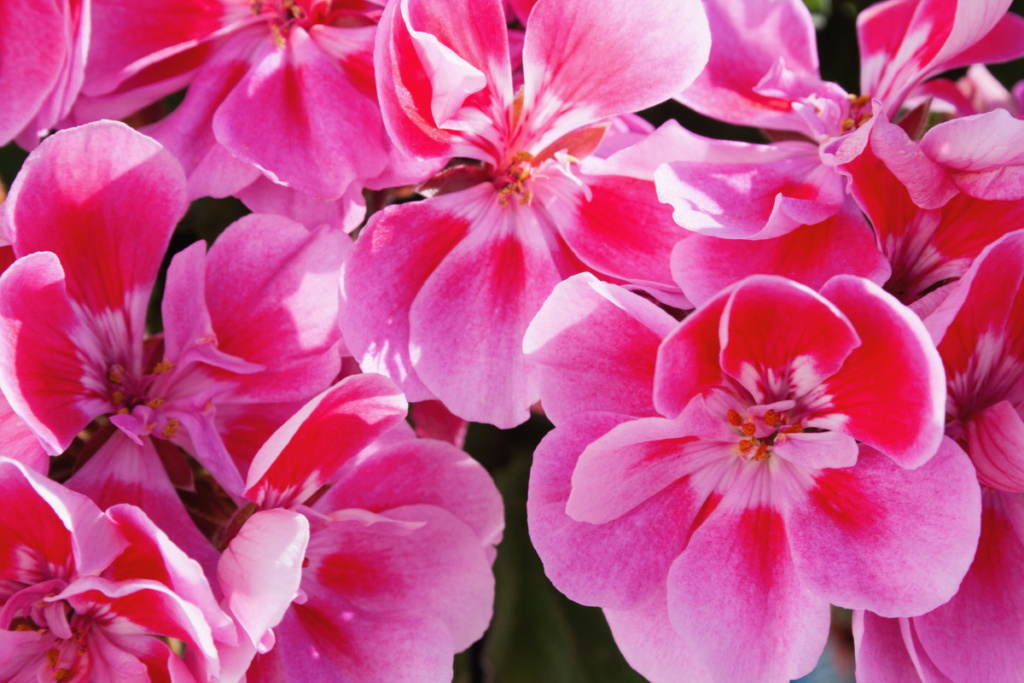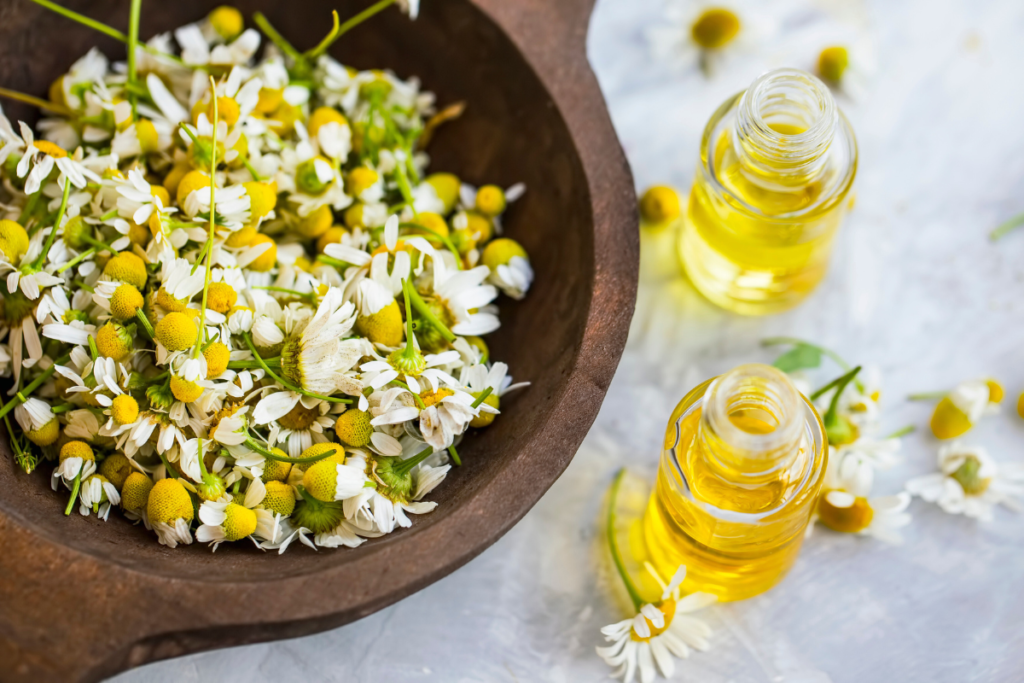The benefits of essential oils are enjoyed by a third of all Americans. But many of us don’t know that only some of them are safe to use in a bath, and others need to be avoided completely.
Many high quality, pure essential oils are safe to add to bathwater. The essential oil must be diluted in an appropriate disperser or carrier oil before adding it to a bath. Bathwater should not exceed 104°F. Essential oils high in phenols, such as Cinnamon or Clove, should be avoided as they can irritate your skin. If phototoxic essential oils are used, like Bergamot or Eucalyptus, sun exposure should be avoided for the following 24 hours.
In this guide, I give you all the information you need to safely use essential oils in a bath – including which ones are best to use, and which ones to avoid.
How to add essential oils to your bath
High-quality, therapeutic grade essential oils that can be applied topically (on your skin) are considered safe to bathe in. But knowing how to add them to your bath water is just as important as knowing which types of oils are safe, especially so you can avoid any skin irritation.
The most common methods to absorb the benefits of essential oils are inhalation (breathing) and topical (skin) application. But when you add essential oils to your bath, you receive both – the bioactive properties of the oil enters your body via your airways and through your skin at the same time.
This double exposure intensifies the effects, both positive and negative. This is why it’s important to understand which essential oils are safe in your bath water. After all, essential oils are volatile substances taken from plants and other natural sources, which affect our body and mind when they enter the bloodstream.
Aromatherapy is a practice that takes advantage of this proven biological activity, introducing high quality essential oils for the treatment of physical and emotional issues. It’s important to understand the properties and effects of the different ingredients in an essential oil before adding it to a bath.
While there is a lot of false information, there is also a great deal of scientific research explaining the best methods of applying essential oils. Here are our guidelines (sourced from published literature) to prepare the perfect bath with essential oils.
1. Choose the right oil
When we inhale the water vapors from our hot bathwater infused with an essential oil, it enters our bloodstream through our nose and lungs. At the same time, our skin is also exposed to the oil in the water, causing topical effects. Exposure over a long period of time can even lead to it entering the bloodstream through oour sebaceous and sweat glands.
The benefits we receive from the essential oil depends on its chemical composition (what it’s made of), but are also affected by the method of extraction. Because the chemical compounds that make up the essential oil enter our body so easily, it’s important to only use products that:
- Have the highest quality standards.
- Are obtained through natural methods (without solvents, for example).
- Are certified for therapeutic use (otherwise only recommended for room aromatisation or perfumes).
2. Apply oil responsibly
Even oils that are great in aromatherapy baths should be applied correctly, and this always involves dilution.
Essential oils are not water soluble – this means they don’t dissolve in water
You must protect your skin, especially the most sensitive areas, from exposure to full strength concentrations of essential oils. This risk is intensified by the water’s temperature.
Proper dilution cannot be done using water soluble substances like animal or vegetable milk, Epsom or regular salt (unless combined with carrier oil), glycerin, alcohol, aloe vera gel, baking soda, or cornstarch.
These do not act as a proper dispersant because they dissolve in the bathwater leaving pools of undiluted essential oil floating around.
Bath products (like bath bombs, washes, shampoos and conditioners) are also not recommended because they already come with their own fragrances and oils.
How to dilute an essential oil
The ingredients you can use to safely disperse the essential oils in the bathwater are:
- Castile soap
- Aloe vera jelly (not gel)
- Vegetable oils (coconut, olive, jojoba, avocado, almond, apricot)
- Dispersal agent (Solubol, Polysorbate 20, Polysorbate 80)
- Modified tapioca starch (Natrasorb Bath)
It’s important to mix the essential oil with the carrier in a container, then dilute the solution in a small amount of water before dropping into the bathtub.
Another thing to have in mind is the right ratio – which is the right amount of essential oil to carrier oil. Unfortunately, there is mixed information about how much is safe.
Most recommend preparing a solution of up to 10% of essential oil content, which equals to 10 drops in 1 teaspoon of carrier oil. While the Tisserand Institute suggests a similar proportion of 5-20 drops of essential oil per half ounce (1 tablespoon) of the chosen bath base (carrier).
The amount of essential oil used should be reduced in the case of:
- Children under the age of 12: use half of the amount with kid-friendly oils, such as spearmint, orange or lavender. Children under 2 years old should not be bathed in water with essential oils.
- Women pregnant or breastfeeding: use half of the amount and check with your doctor for any specific oils that should be avoided, such as aniseed, basil or clary sage, before use.
- People with medical conditions such as epilepsy, hypertension, lung or oncologic diseases, allergies, skin irritation or hypersensitivity to UV radiation should be extra cautious with the choice and ratio of their essential oils. A doctor should always be consulted.
- Some ingredients are more prone to trigger allergic reactions. If your essential oil contains benzyl alcohol, cinnamyl alcohol, eugenol, hydroxycitronellal, isoeugenol, benzyl salicylate, cinnamaldehyde, coumarin, geraniol, anisyl alcohol, benzyl cinnamate, farnesol, linalool, benzyl benzoate, citronellol, or limonene, you should perform a sensitivity test prior to the bath.
Sensitivity Test
If you have sensitive skin, you may experience irritation or an allergic reaction to an oil you have never tried before.
A simple patch test is recommended before full use. Apply a small amount of the oil mixed with a carrier oil to your forearm and observe any reaction for the following day or two. If you have wounds or broken skin, you should avoid adding essential oils to your bath altogether.
3. Set up the right space
Human beings have enjoyed aromatherapy baths for centuries because they are a wonderful way to reward and restore our body and mind. However, relaxing in a tub of hot water can also become a stressful situation if we don’t remember a few things:
- Keep the water at 104 degrees Fahrenheit (or below), just a few degrees above the human body temperature.
- Watch-out for any candles. Essential oils are flammable, so make sure you keep any fire away from your bath.
- Do not exceed 30 minutes inside the bathtub for proper exposure to heat and oils.
- Fill up 60-70% of the bathtub. More than that is usually a waste of water and you risk spilling.
- After taking the bath, always rinse your body with water and dry.
- Be careful with the residue oil that can make your bathtub slippery.
4. Look out for side effects
Even the best oils can have side effects, depending on the person.
For example, rose oil is a very common addition in Japanese baths, yet in some people it can produce dizziness or nausea.
Ylang ylang, geranium and other oils which are widely used in aromatherapy can cause headaches, fatigue, dyspnoea or concentration difficulties in people with sensitivity to fragrances. If you experience any of these symptoms, make sure you reduce the ratio the next time you use the same oil or choose another oil.
In a similar way, oils like bergamot, lime and other citrus which are great additions to baths also cause photosensitivity after prolonged exposure. It’s always best to avoid sun exposure for the 24 hours following a bath. Here are some other phototoxic oils:
- Angelica
- Anise
- Cedarwood
- Eucalyptus
- Neroli
- Petitgrain
- Rosemary
- Yarrow.
Everything you put in your bath will enter your bloodstream through your skin, as it’s exposed for a long period of time. For that reason, it’s crucial that you make a conscious decision about which oils you use, when to use them, and how. Pay attention to your body for signs of unwanted reactions. If you feel any discomfort or notice irritation, rinse with water immediately, avoid further exposure and visit a doctor if symptoms persist. Take extra caution if pregnant, breastfeeding, or suffering from any medical condition, and protect children’s sensitive bodies.
Best essential oils to use in a bath
Many scientists have studied the biological activity and skin permeability properties of essential oils. They have found that once the oils enter the human body, they have positive effects over systemic malfunctions.
For that reason, a hot bath infused with aromatic oils is a popular treatment for various skin, nervous and cardiovascular issues, and also as an effective muscle relaxant. Here are some of the best oils to put in your bathwater:
Lavender oil

Lavender has been added to baths since the Roman Empire. This is thanks to being rich in linalool (a type of terpene alcohol), which shows sedative effects, and linalyl acetate, with narcotic actions.
It’s believed that the origin of the word ‘lavender’ is a Latin word that means ‘to wash’. Today, as in ancient times, it’s widely used in laundry and aromatherapy baths. Lavender oil supports mental and physical wellbeing, and there is plenty of evidence showing it can help when healing abrasions, burns and other skin problems.
With such an extensive history, the use of lavender oil is also well documented for the treatment of stress, headaches, promotion of new cell growth, skin problems, muscle pain and supporting of the immune system – making it the perfect addition to any bath.
Like any other volatile substance, lavender ooil must be diluted with a carrier oil. It should also be avoided during the first trimester of pregnancy.
Lemon oil

Called the Liquid Sunshine, lemon oil has an uplifting scent. Lemon oil can be added to baths to rejuvenate the skin, reduce fatigue and relieve flu symptoms. It also supports the immune system and metabolism.
Ylang Ylang oil

Ylang Ylang oil has a sweet, comforting scent, with great benefits to the body and mind. It’s a proven antidepressant and antianxiety agent, and also helpful when fighting hypertension, stress and palpitations.
Geranium oil

Geranium is an essential oil with an uplifting, floral scent. It was widely used among the ancient Egyptians. It’s used to treat a variety of issues, from skin conditions to fungal infections. Geranium oil is also popular for its ability to control emotions and improve moods.
Roman Chamomile

One of the most ancient medicinal herbs, chamomile oil has been a key player in the treatment of fevers, inflammations, muscle spasms, menstrual disorders, insomnia, ulcers and rheumatic pain. Chamomile oil is also known for helping with depression and anxiety, headaches and skin disorders.
Essential oils NOT to put in your bath
Some oils are particularly potent, especially when reacting to heat, and can be harmful to our sensitive bodies.
It’s best to avoid adding black pepper, clove, cinnamon, thyme, basil, laurel, oregano, peppermint, sage, lemongrass, melissa, and ginger to your bath. A sensitivity test is strongly recommended before any type of use.
What about other oils?
Can I put eucalyptus oil in a bath?
Eucalyptus oil has been studied for its outstanding effectiveness in the treatment of several diseases. This includes metabolic and infectious diseases, rheumatoid arthritis, muscle and joint pains, several skin problems and respiratory discomfort.
Eucalyptus oil can be safely enjoyed in a bath. It must be diluted with a carrier oil, avoiding direct contact with the eyes. However it is phototoxic, and sun exposure should be avoided for a day after the bath.
Is peppermint essential oil safe for baths?
Peppermint oil has many properties, including strong antispasmodic activity. It has also relieved bacterial, fungal and viral infections, lung congestion and skin itching in studies. In a bath, it can help with back pain, menstrual cramps, fatigue and coughs. But its high menthol content means that inhalation and topical application of peppermint oil causes irritations to the skin.
While Peppermint oil is non-toxic in very low amounts, it’s not ideal for baths. If still used, it must be properly diluted, and should never reach the eyes or inner ears. Pregnant, nursing women and children should avoid any exposure. Peppermint is a stimulant and its use is not recommended before sleep.
Can I put jojoba oil in my bath?
Jojoba oil has been successfully used in skin treatments since the 18th century by Native Americans. Its chemical composition resembles the sebum found in human skin, making it a great softener that can be applied directly and leaves no greasy residue. In fact, it’s widely used as a carrier oil for topical application of other oils.
Jojoba oil is safe to put in your bath. It’s also a recommended dispersant to introduce other essential oils into your bathwater. While it’s hypoallergenic and rarely irritating, a sensitivity test is always recommended before applying any type of oil to your skin.
Can frankincense be added to bath water?
Frankincense, the ‘pure incense’ as its name suggests, is often taken internally as a supplement. Popular in Ayurvedic medicine, it has many properties that support general wellbeing. Most of the benefits can also be absorbed through inhalation or topical application.
Frankincense oil is safe to put in bathwater. But it must be avoided entirely during pregnancy or while trying to become pregnant. As with any other essential oil, it must be diluted with a carrier oil.
